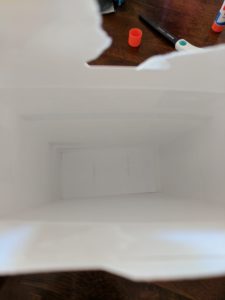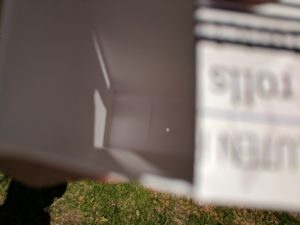Tonight as you countdown to midnight, ring in the new year with 2018 ‘s first supermoon! January 1st at 7:15pm (MDT) happens to be the first full moon of the year. It will also be near perigee (it’s closest distance to Earth) making it a supermoon. But the Moon will still be an amazing site tonight as we all celebrate! It will rise a little before sunset (~4:10pm MDT) and be visible until before sunrise (~5:30am MDT) providing all new year’s revelers a wonderful midnight glow. And because the Moon will be close to perigee, it will appear bigger and provide extra light – the perfect New Years ball!
January will see another supermoon at the end of the month as well. This is an extra special supermoon since it is a blue moon (second full moon in a month) and the night of a total lunar eclipse. Here in Albuquerque we will be treated to an early morning total lunar eclipse show on January 31st as a blood red Moon sets at ~7:00am MDT. The partial phase of the lunar eclipse begins at 4:48am MDT, with the Moon completely eclipsed beginning at 5:51am MDT. We will not see the second phase of the partial lunar eclipse as the Moon slips out of the Earth’s shadow. But, it will be an amazing site seeing the light of the sun rises from Earth turning the Moon red as it sets near the volcanoes to the west of ABQ.
With so many Moon events occuring in 2018, my family decided to make a Moon phase calendar for the year. JPL just released an excellent template for making a Moon phase calendar that spins. 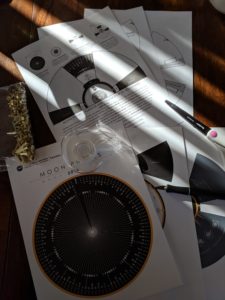
We had a great time making ours while discussing the phases of the Moon and eclipses. We’ve had even more fun using them since – both of my kids have been looking forward to what phase the Moon will be on different dates in 2018. My six year old was able to make her calendar primarily by herself; she only needed help with hole punching.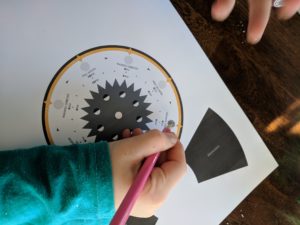
I even made a laminated version to guard against a year’s worth of wear.
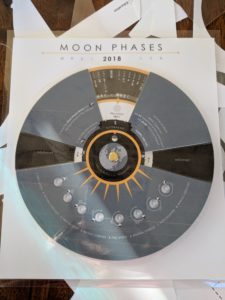
Have a wonderful supermoon New Year!!!!
Clear skies.
~Misty Carty, Ph.D.










